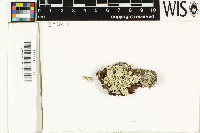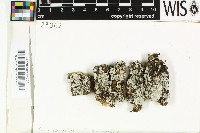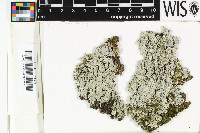
Consortium of Lichen Herbaria
- building a Global Consortium of Bryophytes and Lichens as keystones of cryptobiotic communities -
- Home
- Search
- Images
- Species Checklists
- US States: O-Z >
- US National Parks
- Central America
- South America
- US National Parks
- Southern Subpolar Region
|
|
|
|
Family: Physciaceae
|
Nash, T.H., Ryan, B.D., Gries, C., Bungartz, F., (eds.) 2002. Lichen Flora of the Greater Sonoran Desert Region. Vol 1. Thallus: foliose, irregular to orbicular, up to 4 cm diam., usually loosely adnate lobes: thin, usually less than 150 µm thick, loosely adnate to ascending, up to 2 mm wide; tips: rounded, eciliate upper surface: gray to dark gray and 'frosted', sorediate soredia: in marginal soralia that give the margins an undulate appearance, usually not reaching the outermost parts of the lobe tips, sometimes eroded upper cortex: paraplectenchymatous medulla: white lower cortex: indistinct proso- to paraplectenchymatous lower surface: whitish gray to brownish, with concolorous or darker rhizines Apothecia: uncommon, not seen in the Sonoran Desert material, elsewhere up to 2 mm wide; margin: sorediate ascospores: brown, 1-septate, intermediate between Physcia- and Pachysporaria-type, (15-) 18-27 (-33) x (7-) 8-11 (-13) µm Pycnidia: uncommon, not seen in the Sonoran Desert material Spot tests: cortex and medulla K+ yellow, C-, KC-, P+ yellow Secondary metabolites: upper cortex with atranorin; medulla with atranorin, zeorin and additional triterpenes. Substrate and ecology: growing on trunks and branches in open situations World distribution: South America and East Africa Sonoran distribution: coastal or montane sites of Sonora, Sinaloa, Chihuahua and southern Arizona. Notes: The species is extremely variable in lobe size but easily recognized by the 'frosted' upper surface, the marginal, ± undulate soralia, and the pale lower surface. These characters separates it from all other Physcia species in the area. |
Powered by Symbiota



























